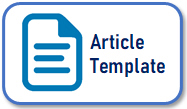Studi Etnobotani Pemanfaatan Tumbuhan Obat Tradisional oleh Masyarakat Nagari Sijunjung
Abstract
Minangkabau is one of the ethnics that uses plants as medicine. In this ethnobotanical study, the aim was to find out the use of plants as medicine by the people of Sijunjung. Data collection was carried out directly by interviewing native people. From the result known that there are about 42 types of plants used by the indigenous people of Sijunjung as medicine. Of the 42 types of plants used, sitawa (Costus speciosus) is the most widely used plant in the treatment of fever. Almost all plants used as medicine are taken orally.
Keywords
Full Text:
PDFReferences
Agus, A. 2010. Tanaman obat Indonesia. Jakarta: Salemba MedikaTjitrosoepomo.
Badan Pusat Statistik (BPS). 2022. Kabupaten Sijunjung dalam Angka 2022. BP Indonesia.
Badan Pusat Statistik (BPS). 2022. Statistik Tanaman Biofarmaka Indonesia 2022. BP Indonesia.
Bhattacharya S, Nagaich U, (2010), Assesment of Antinociceptive Evicacy of Costus speciosus rhizome in Swiss albino mice, J. Adv. Pharm. Technol. Res., 1(1), 34–40.
Duraipandiyan V, Al-Harbi NA, Ignacimuthu S, Chinnasamy M, (2012), Antimicrobial Activity of Sesquiterpene Lactones Isolated from Traditional Medicinal Plant, Costus speciosus (Koen ex.Retz.), BMC Complementary and Alternative Medicine, 12:13 (http://www. biomedcentral.com/1472-6882/12/13)
Eliza J, P Daisy, S Ignacimuthu, V Duraipandiyan, (2009), Normo-glycemic and Hypolipidemic Effect of Costunolide Isolated from Costus speciosus (Koen ex. Retz.)Sm. in Streptozotocin-Induced Diabetic Rats, Chem. Bio. Interact., 179, 329–334.
Gupta MM, Singh SB, Shuklat YN, (1988), Investigation of Costus; V. Triterpenes of Costus speciosus Roots, Planta Med., 54 (3), 268.
Irvine, F.R. 1961. Woody Plants of Ghana (With Special Reference to Their Uses). 2nd Edition, OUP, London, pp. 233-237.
Kementerian Kesehatan RI, 2012. Sistem Kesehatan Nasional. Kementerian Kesehatan RI.
Ncube, B. dan Van Staden, J. 2015. Tilting plant metabolism for improved metabolite biosynthesis and enhanced human benefit. Molecules. 20:12698–12731.
Nehete J, M Bhatia, M Narkhede, (2010), In-vitro Evaluation of Antioksidan Activity and Phenolic Content of Costus speciosus (Koen) JE.Sm, Iranian J. Pharm. Res., 9(3), p271-277.
Parveen, B.U., Shikha, R., dan Ashawani, K. 2007. Traditional uses of medicinal plants among the rural communities of Churu district in the Thar Desert, India. J. Ethnopharmacol., 113: 387-399.
Ratnayake Bandara BM, Hewage CM, Karunaratne V, Adikaram NKB, (1988), Methyl Ester of Para-coumaric acid: Antifungal Principle of the Rhizome of Costus speciosus, Planta Med., 54(5), 47-48.
Ristoja. 2012. Eksplorasi Pengetahuan Lokal Etnomedisin dan Tumbuhan Obat di Indonesia Berbasis Komunitas. Laporan Nasional RISTOJA 2012. Badan Litbang Kesehatan Kementerian Kesehatan RI.
Selim S, and Al-Jaouni S, (2015) Anticancer and apoptotic effects on cell proliferation of diosgenin isolated from Costus speciosus (Koen.) Sm, BMC Complementary and Alternative Medicine, 15,301.
Syamsuhidayat. 2000. Inventaris Tanaman Obat Indonesia. Jakarta: Departemen Kesehatan RI dan Kesejahteraan Sosial.
Refbacks
- There are currently no refbacks.




